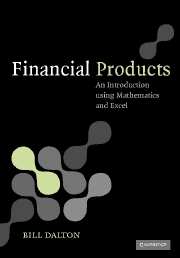Summary
This book is an introduction to some of the ways mathematics can be used to obtain useful, profitable and extremely attractive results in finance. It is now widely recognised that the financial world has become a profitable hunting ground for mathematicians. Indeed, without a confident grasp of basic mathematics, many of the most important financial products in the market will not be understood. It is the aim of this book to explain, in simple terms, some of the most important ideas of basic financial mathematics. A significant feature of the book is that Excel spreadsheets are used to assist the reader with the more tricky algebraic manipulations. If the reader is strong in algebra, the spreadsheets act as an aid with the calculations. If the reader is not so strong, these spreadsheets will show, in a numerical framework, what is ‘going on’ in the algebra. By seeing what the spreadsheet is doing, the reader grasps the purpose of the algebra. An introduction to those parts of Excel used in this book is given in the first chapter. However, this is not meant to be a tutorial in Excel; rather, it is a basic covering of those features of Excel the reader will need. It is important to emphasise that to move ahead with this subject, familiarity and confidence with Excel (or some other programming language) are essential. Some references are given in ‘An introduction to Excel’.
- Type
- Chapter
- Information
- Financial ProductsAn Introduction Using Mathematics and Excel, pp. 1 - 8Publisher: Cambridge University PressPrint publication year: 2008



